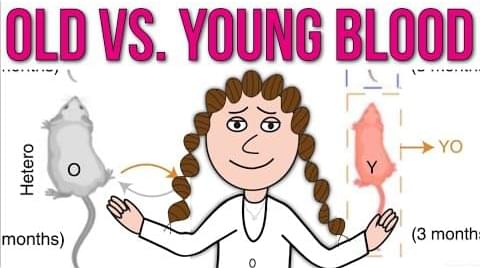All Sheekey vids are a must,.
A landmark study that came out in 2005 showed that if you fused the blood systems of old and young mice, a process known as heterochronic parabiosis, it rejuvenated the cells of old mice. It suggested that there was something in the blood and there were two possible explanations; there were rejuvenating factors in the young blood, or there was dilution of pro-aging factors in the old blood. Or some combination of both.
Well, since 2005 more studies have come out. A 2016 study showed that heterochronic blood exchange, so just transfer from young to old, or old to young, without fusing, had a greater impact when old blood was given to young, than when young blood was given to old. In better words, “the inhibitory effects of old blood are more pronounced than the benefits of young”.
So, somewhat ruling out “factors in the young blood”. But even more support came from studies published a few years ago, where again they supported this latter theory. You see, simply diluting the old blood, that is taking plasma out of blood of the old mice and replacing it with saline and albumin (abundant protein found in blood) had the same effect. This process, known as neutral plasma exchange, involves no Frankenstein surgery or young blood vampire like scenario. AMAZING.
But, it still didn’t address why or how? The authors of that paper left us with this rather interesting hypothetical hypothesis graph of what potentially might be happening to some factors present in the blood, but they were otherwise unsure on what or how these beneficial effects were being achieved. What were the important factors to remove?
Well, we now have more answers. But first we need to introduce cellular senescence.
Find me on Twitter — https://twitter.com/EleanorSheekey.
Support the channel.
through PayPal — https://paypal.me/sheekeyscience?country.x=GB&locale.x=en_GB
through Patreon — https://www.patreon.com/TheSheekeyScienceShow.










Comments are closed.